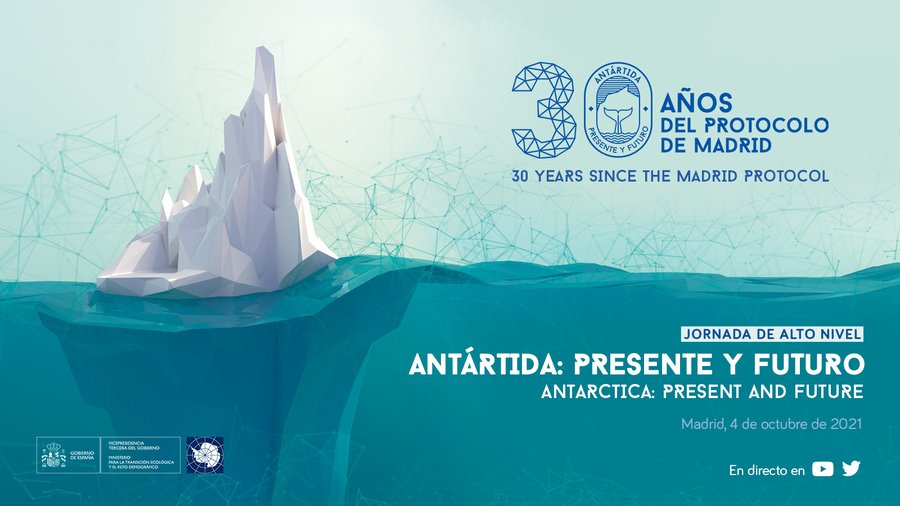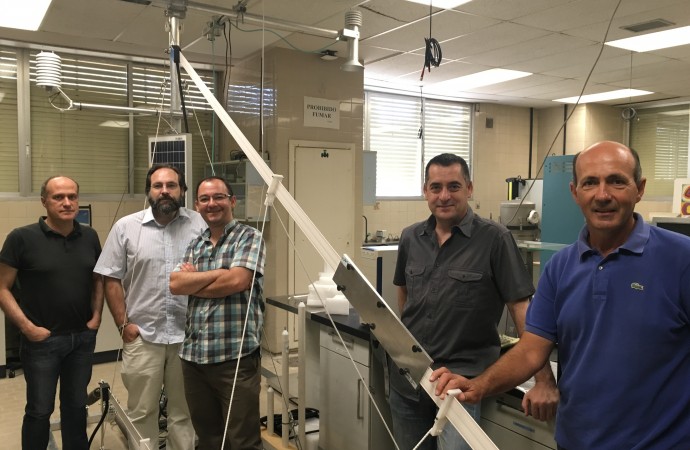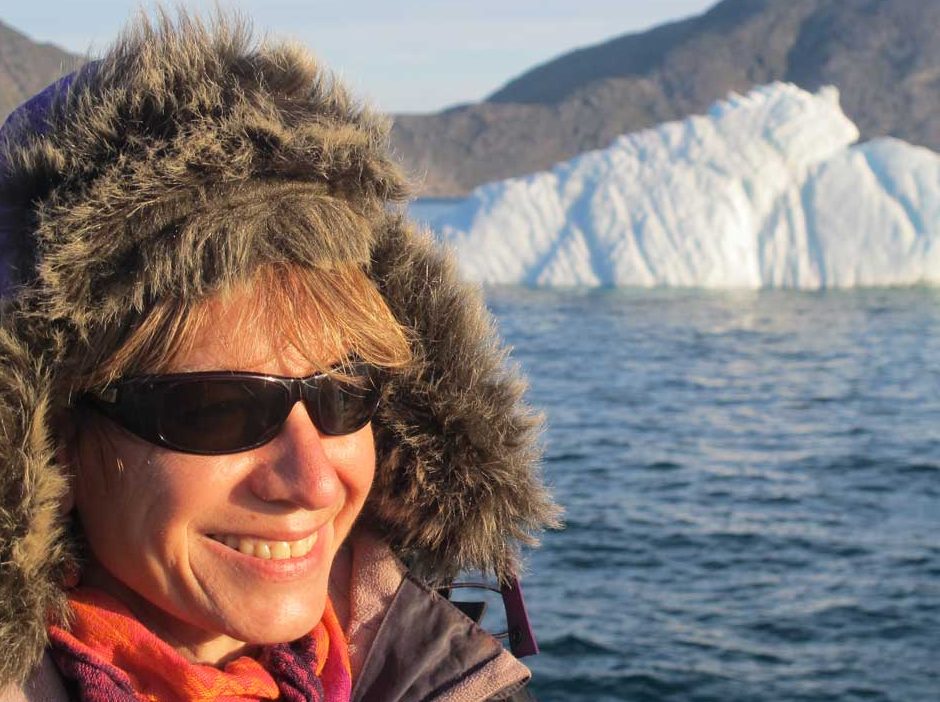
Field work in a chinstrap penguin colony in Antarctica.
@ValentínCarrera, Deception Island.
The scientific trip starts by collecting a thermos of hot soup, some bread, cheese and drinks in the kitchen at the Gabriel de Castilla base. It is compulsory that the backpack always has to carry “all that you might need if you were to face the worst day of your life.” In Antarctica, the 40 knots winds give no warning. The ecologists Andrés Barbosa, Josabel Belliure and Jesús Benzal also carry a few sophisticated GPS, loggers, and diverse instrumentation for field work: tubes, spatulas, swabs, syringes, scales and many more things that I will be discovering during the day.
I join with the rest of the group at the door of the scientific module and we start the trip as happy as rabbits, skirting the edge of Bay Foster’s beach, our boots sinking into the tephra bed. Andrés and Jesús are moving forward steadily; Josabel is telling me about her love for penguins, and I am so distracted that I step into all the puddles on the way. We leave behind the Argentine base, which glitters in the sun as if it has been freshly painted, and we walk around the Irizar, a deep emerald colour glacier lake.
Deception Island sits above a crater; it is nearly circular, with a horseshoe shape, like a donut with a bite taken out of it. In the inner circle, the bases are located and also the historic bays, Whalers Bat and Pendulum Cove. On clear days, the two banks look at each other. However, penguins need the open sea to search for food. At sea, they swim incessantly in search of krill banks, so the Penguin colonies are located in the outer circle. Here, there are eight huge chinstrap penguin colonies, the two largest are the Morro Baily, to the east, in the so-called straight coast, because the terrestrial plate draws a straight line, and Vapour Col, to the western part of the island, where we are headed for. To get from the base to the Penguin Colony we must walk up a 300 meter hillock, at the foot of the Irizar forest. The researchers do this walk every day, an hour and a half each way if the wind does not push against you.
I join Andrés, Josabel and Jesús aware of the privilege that it is spending a day at the Penguin Colony closely watching their field work. The day is sunny and the temperature a pleasant 3 degrees, so the trip becomes a walk. We stop, without haste, to look at the landscape, to breathe deeply, to feel nature, which explodes in gushes when we change from one slope to the other. Suddenly, we contemplate the endless sea at our feet and see the Rada Penguin Colony in the horizon. So we go down zigzagging careful not to step on the delicate mosses and lichens, which is the only visible vegetation.
Andrés Barbosa Alcón, from the National Museum of natural sciences (CSIC) is in charge of the team. He has spent nearly twenty years studying penguins and Antarctic ecosystems. Jesús Benzal, a technician from the Arid Zones Experimental Station in Almeria (Spain), knows each nest and each pair of penguins, and moves around the colonies with astonishing easiness. Josabel Belliure, is an ecology teacher at the University of Alcalá (Spain), and it is not that she talks to penguins, she takes them in her arms and chats to them. These people are my guides in this adventure of science. The day passes very quickly as if in a dream: contemplating every gesture, every manoeuvre.
Sixty thousand penguins
The Collado Vapor penguin colony is made up of some twenty colonies of different sizes in which twenty thousand couples nest: forty thousand penguins, with one or two offspring in each nest. Barbosa’s team has spent twelve campaigns studying these colonies, so that each individual penguin is registered and they almost have a name and surname. Nests marked with stakes, are where a lucky penguin is chosen from and a logger strapped to it. A logger is like a backpack on his back which contains a GPS capable of recording for five days the penguin’s activity, where it goes, how it swims, how deep it dives… These penguins are watched and five days later, when they return to the nest, they bring with them all the data. But, unfortunately, from time to time, one does not return…
Today the task is to recover a penguin with a logger. Jesús treads with a soft step around the Penguin Colony without causing any fuss and captures the penguin. Immediately after, Josabel takes the two chicks and gathers them gently in her lap. All four of us sit close by: Jesús holds the adult penguin while Andres extracts blood and stool samples, which are deposited in vials. Then, they are spun in a device and the blood is separated into plasma and red blood cells, the same as in a human analysis, obtaining DNA, nutrition, disease, and parasite data. Meanwhile, Josabel weights and measures the two chicks, marks them with indelible blue marker under the wings, almost flaps really, and collects stool samples.
Here all is done with a lot of calmness, “Antarctica requires a lot of patience,” as Barbosa says while talking to the animals as if they were old acquaintances. “Be quiet,” says Josabel to a chick, “now you go with Jesús,” and Jesús takes the chick and weighs it suspended on the balance. In the field notebook all the weights and measures, and the dates and times, are recorded: the field notebook is dry today, and I lie on the pleasant volcanic sand, but these three researchers do the same work every day, over the course of one or two months, with wind, rain or snow, and then the pages of the field notebook cry with the cold.
We retrieved three loggers with precious data; a fourth villain has escaped, but the biologists will return tomorrow, and the next day, until it appears. Before eating, we take a walk along the beach, respecting the roads, almost highways, where a relentless procession of penguins come and go from the colony to the sea in search of food. The landscape is dominated by a rocky crown, called New Rock, lean and lonely. These rocks, like all the rocks on the island, are volcanic and rounded by the tide’s erosion. There is also a sea elephant sleeping on the shore who doesn’t seem upset by our presence.
A vocational work
At noon, we set up our picnic on a sunny slope, sheltering from the wind: a nutritious hot soup, cheese, and nuts. I brought a piece of cured pork loin from my home town as a treat and some chocolate for dessert. While we eat, we see whales on the sea: a fantastic view. The skuas and petrels fly over the penguin colonies on the lookout for some unsuspecting chick and, occasionally, some short-sighted penguin approachs us and looks at our food. Such is the calmness that while the scientists check other nests, I take a nap.
The trip back, with the task accomplished, is even more enjoyable. The afternoon is sunny, a generous gift from Antarctica as this is not common. Again, I scanned the horizon, now to the eastern side, in front of us is the island and in the background Foster Bay. We descend, laughing, to Lake Irizar by an embankment of tephra.
But the work has not ended: once we arrive at the Base, after taking a shower and the obligatory evening meeting, where the work is coordinated for all teams, we have to dump the data onto a computer, process the samples, centrifuge the blood, sort photos, review loggers and prepare the next day’s trip. Later, when at home or at their universities’ labs, the scientists will process the data collected and study it and elaborate hypotheses and conclusions. There will be many hours of study and research, which would not be possible without a true vocation, without passion, in this great Antarctic laboratory, the adventure of science.








 Base Gabriel de Castilla en Isla Decepción
Base Gabriel de Castilla en Isla Decepción Blog PERMASNOW – Universidad de Alcalá
Blog PERMASNOW – Universidad de Alcalá British Antarctic Survey
British Antarctic Survey Caminando entre pingüinos
Caminando entre pingüinos El blog de Rosa M. Tristán
El blog de Rosa M. Tristán The Antartic Report
The Antartic Report